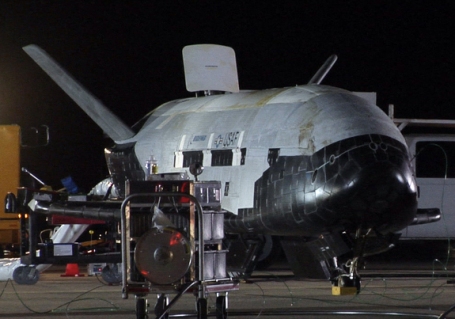
Dream Chaser
Credit : SNC
Sierra Nevada Corporation’s announcement last week that it is partnering with Lockheed Martin to further develop its Dream Chaser space plane for NASA’s Commercial Crew Competition brings a new twist to the program to succeed the Space Shuttle as America’s ground to LEO space transportation system. With Dream Chaser designed to launch on the United Launch Alliance Atlas V, a rocket designed by Lockheed Martin but now operated by the separate ULA in which LockMart is a 50% partner along with Boeing, last week’s announcement builds on an existing partnership in two ways. First, by helping SNC prepare its separately bid, $10 million Certification Products Contract, the aerospace and defense giant should be able to uses its contracting prowess to advance the proposal further towards safety certification, sort of like calling in an accountant when your taxes get a little too complicated. The second significant point of collaboration, actually building the composite structure at NASA Michoud, as a part of the $212.5 million award for Commercial Crew Integrated Capability, is considerably more interesting.
Sierra Nevada clearly felt that it needed additional expertise in actually constructing the orbital flight vehicle, which is why it solicited bids for the work, and as the lead contractor for NASA’s Orion spacecraft, Lockheed Martin is definitely in a position to provide it. Boeing, whose own defense oriented Phantom Works division actually has applicable experience in building the X-37B robotic spaceplane, was hardly a good candidate considering that the company is also heavily invested in promoting its own CST-100 space capsule for the same program.
Another obvious choice was Northrop Grumman, which recently made human spaceflight news when it was selected to refine designs for Golden Spike’s proposed lunar lander. More to the point, as the owner of Scaled Composites since 2007, which previously built the prototype X-38 Crew Return Vehicle, as well as the all-composite Spaceship’s 1 and 2, Northrop Grumman would have presumably been in a position to provide experience as well.
If the Orion program, which has cost the taxpayer nearly 9 billion dollars dating back to the emergence of the original Crew Exploration Vehicle proposal in 2004, is illustrative, Lockheed Martin, which won the development contract in 2006, is also bringing a legacy of extremely high costs to the project, which will ultimately have to fit within the constrained funding profile of the Commercial Crew Program. Considering its role in other high profile, budget busting programs such as the F-22 and Joint Strike Fighter, significant involvement in the Dream Chaser project has got to raise the question of how costs will be contained to fit within what will realistically be available.
The entry is already financially challenged hampered by the Atlas V launch vehicle, which is almost certain to carry a considerably higher per flight cost than the alternative SpaceX Falcon 9. Ironically, this very factor could actually work in SNC’s favor in a two winner scenario. With the Boeing CST-100 also launched by the Atlas V, decision makers might find it appealing to proceed quickly with the lower cost and flight proven Falcon 9 / Dragon combination, thereby allowing a funding wedge for the slower developing Dream Chaser, an entry with definite advantages in some areas, as well as obvious emotional appeal as successor to the Shuttle.
For the moment at least, it appears that the Sierra Nevada / Lockheed Martin partnership both increases the chances that the Dream Chaser proposal will be advanced to become an acceptable, certifiable spacecraft, while at the same time raising the risk that its full costs will grown beyond the bounds of the Commercial Crew program as it is currently structured.
With NASA facing long-term budget austerity, Lockheed Martin, through Sierra Nevada, now joins Boeing in having a stake on both sides of the SLS/Commercial Crew split, one which is likely to become increasingly heated over next several budget cycles.





